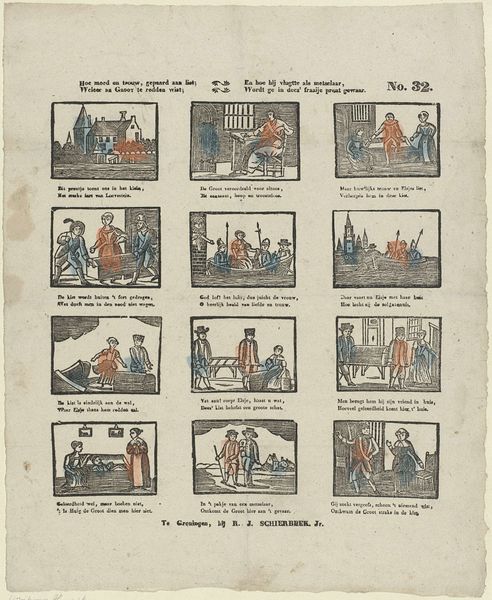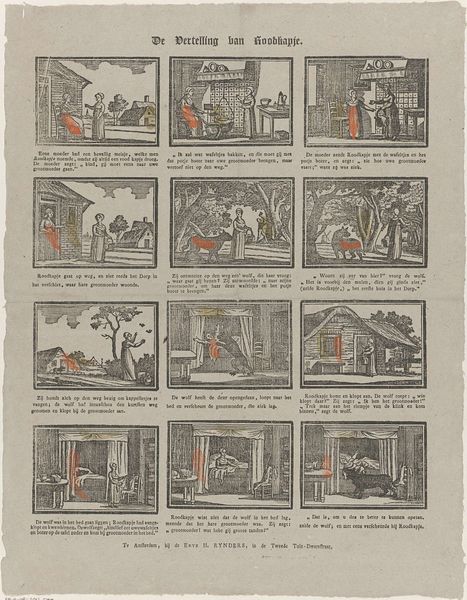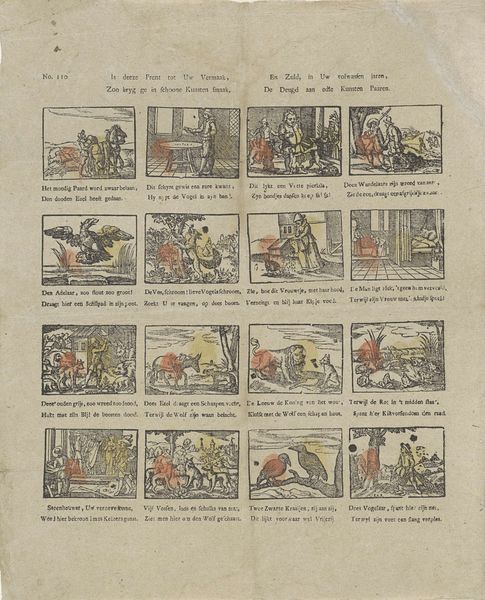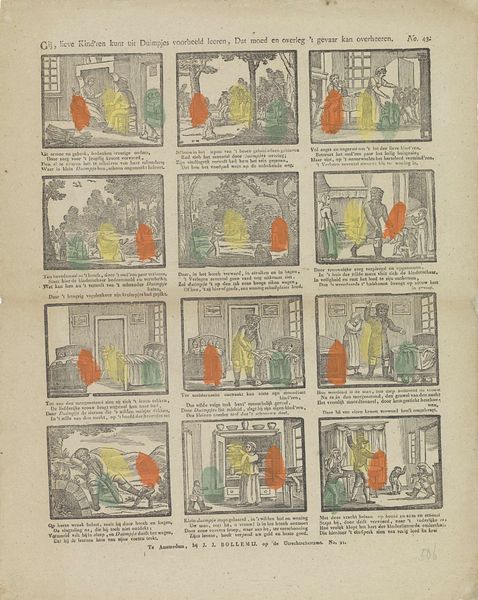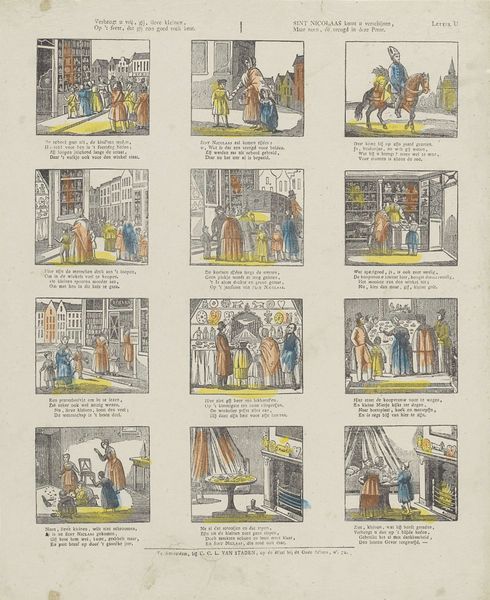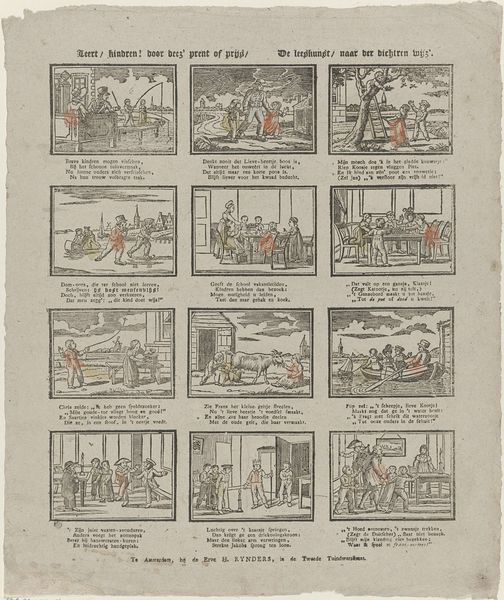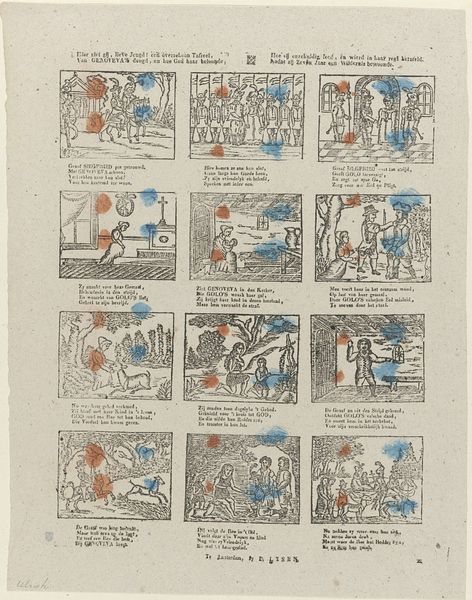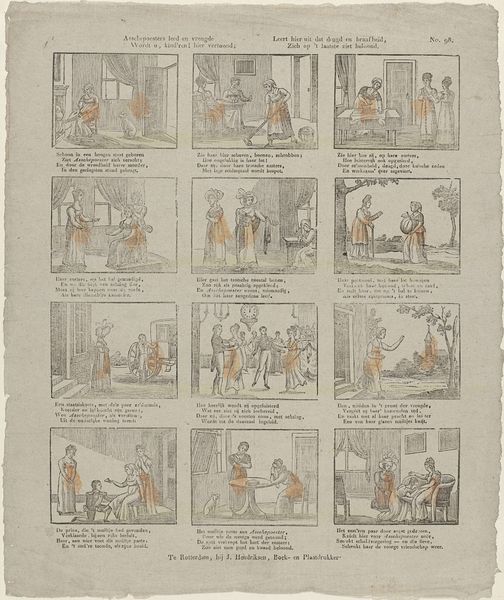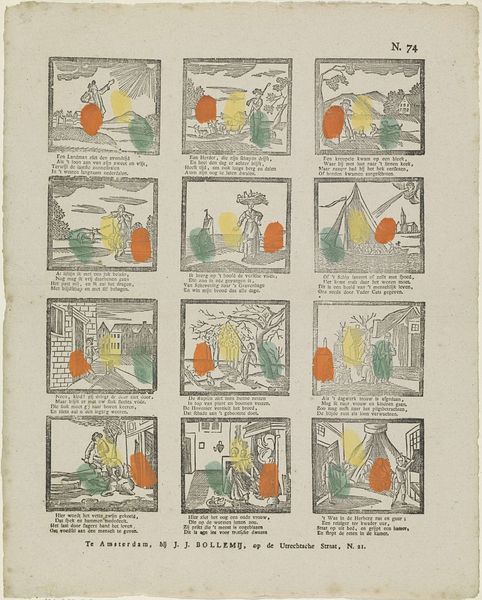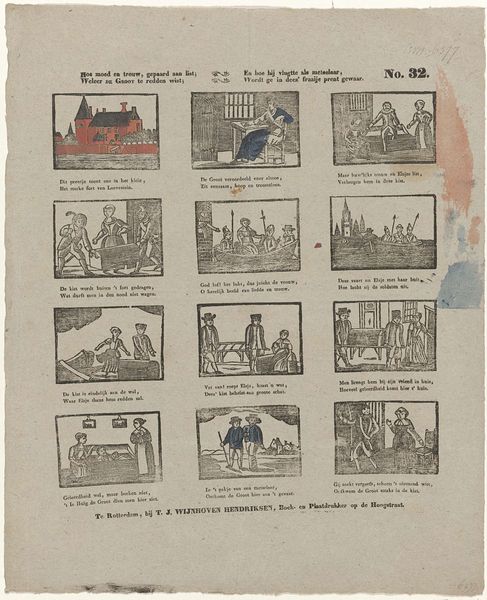
Wat onder 't Spaansche jok Oud-Holland heeft geleden, / En hoe 't met moed steeds voor zijn vrijheid heeft gestreden; / Gelijk 't beschreven staat in de historieblaan, / Toont, lieve kinderen, deez' fraaije prent u aan 1832 - 1850
0:00
0:00
rudolphjacobschierbeek
Rijksmuseum
graphic-art, print
#
graphic-art
#
comic strip sketch
#
quirky illustration
#
blue ink drawing
#
quirky sketch
#
narrative-art
# print
#
personal sketchbook
#
sketchwork
#
ink colored
#
sketchbook drawing
#
genre-painting
#
history-painting
#
storyboard and sketchbook work
#
sketchbook art
Dimensions: height 395 mm, width 325 mm
Copyright: Rijks Museum: Open Domain
Rudolph Jacob Schierbeek created this print in the Netherlands sometime in the 19th century, to show children the history of Dutch resistance to Spanish rule. Composed of twelve small scenes, the print presents key moments from Dutch history, framed as a heroic struggle for freedom. Consider the cultural context: in the 19th century, there was a surge of national consciousness. Educational prints like this played a role in shaping a shared sense of Dutch identity, emphasizing historical narratives of courage and independence. These prints reflect the institutionalization of history, where stories of the past are used to instill patriotic values. Was this "history" being co-opted as propaganda? Historians use prints like this as sources, analyzing them for their visual codes, cultural references, and historical associations. By studying such artifacts, we gain insight into the social conditions, political sentiments, and cultural values of the time. The meaning of art is always contingent on its social and institutional context.
Comments
No comments
Be the first to comment and join the conversation on the ultimate creative platform.
